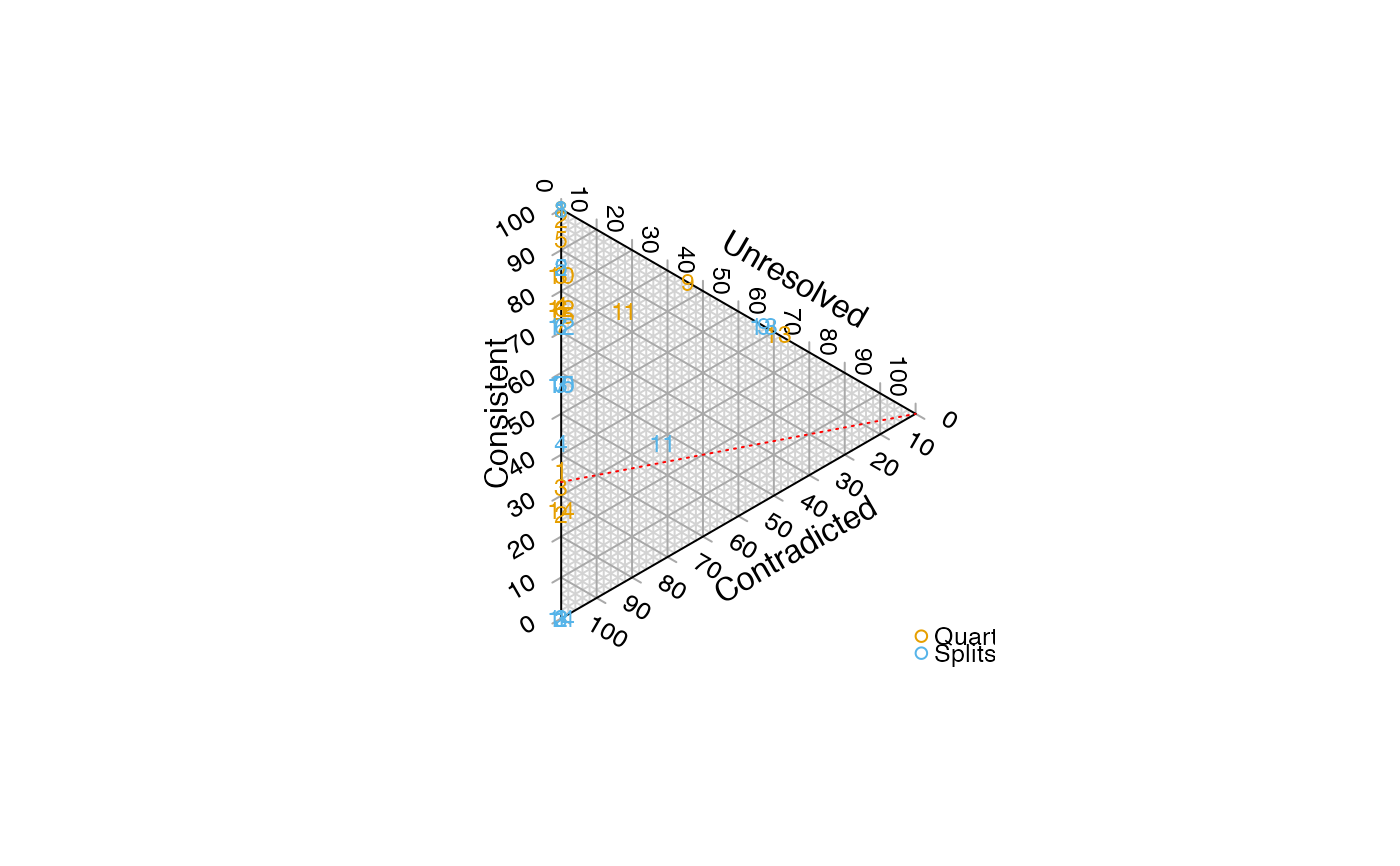Generate points to depict tree difference (in terms of resolution and accuracy) on a ternary plot, per Smith2019;textualQuartet.
Usage
QuartetPoints(trees, cf = trees[[1]])
SplitPoints(trees, cf = trees[[1]])
BipartitionPoints(trees, cf = trees[[1]])Value
A data frame listing the ternary coordinates of trees, based on the amount of information that they have in common with the comparison tree (which defaults to the first member of the list, if unspecified).
Details
The ternary plot (produced using the Ternary package, Ternary;nobracketsQuartet) will depict the number of quartets or splits that are:
resolved in the reference tree (
cf), but neither present nor contradicted in each comparison tree (trees);resolved differently in the reference and the comparison tree;
resolved in the same manner in the reference and comparison trees.
If the reference tree (cf) is taken to represent the best possible
knowledge of the "true" topology, then polytomies in the reference tree
represent uncertainty.
If a tree in trees resolves relationships within this polytomy, it is not
possible to establish (based only on the reference tree) whether this
resolution is correct or erroneous.
As such, extra resolution in trees that is neither corroborated nor
contradicted by cf is ignored.
Examples
library("Ternary")
data("sq_trees")
TernaryPlot(alab = "Unresolved", blab = "Contradicted", clab = "Consistent",
point = "right")
TernaryLines(list(c(0, 2/3, 1/3), c(1, 0, 0)), col = "red", lty = "dotted")
TernaryText(QuartetPoints(sq_trees, cf = sq_trees$collapse_one), 1:15,
col = Ternary::cbPalette8[2], cex = 0.8)
TernaryText(SplitPoints(sq_trees, cf = sq_trees$collapse_one), 1:15,
col = Ternary::cbPalette8[3], cex = 0.8)
legend("bottomright", c("Quartets", "Splits"), bty = "n", pch = 1, cex = 0.8,
col = Ternary::cbPalette8[2:3])
